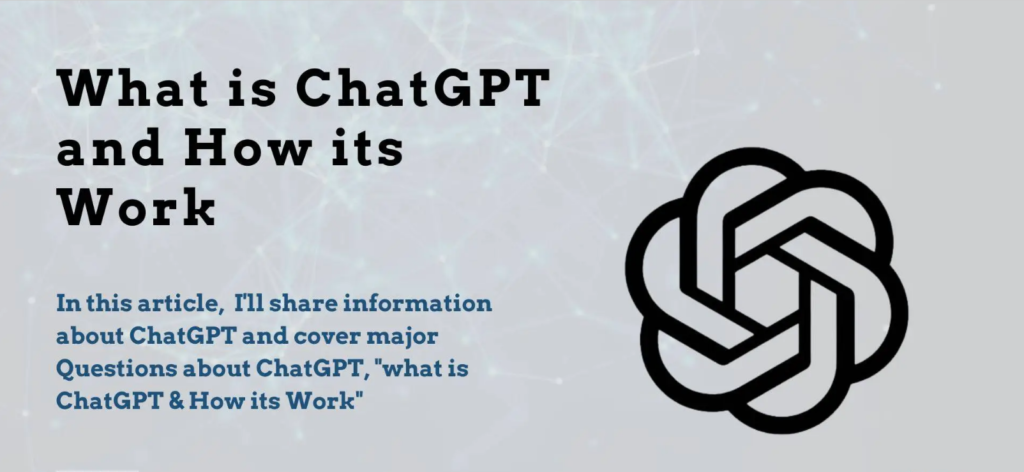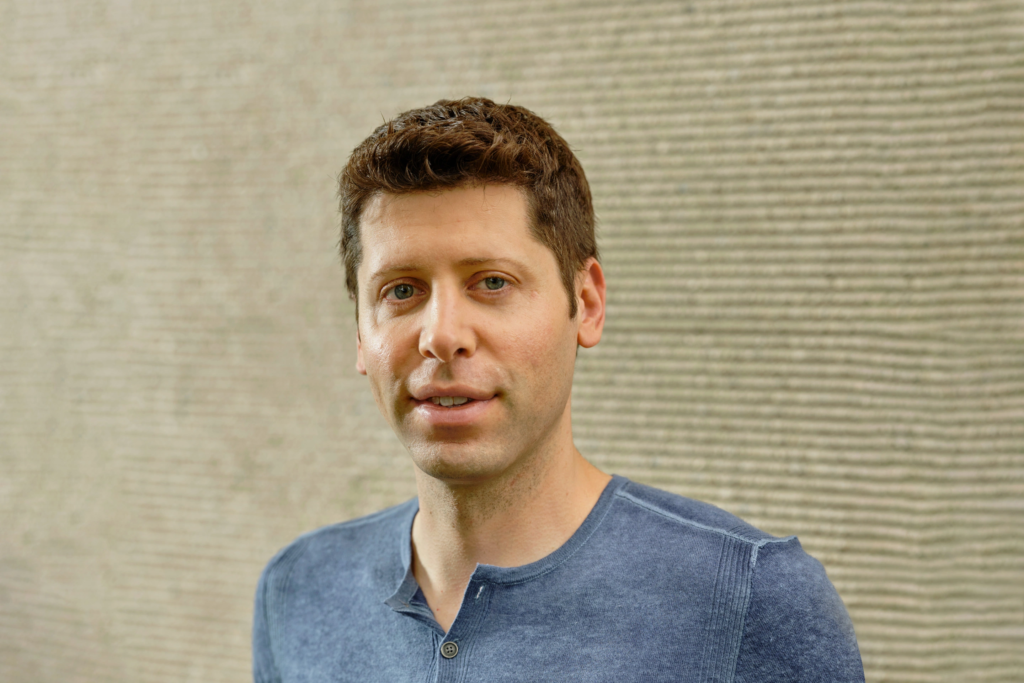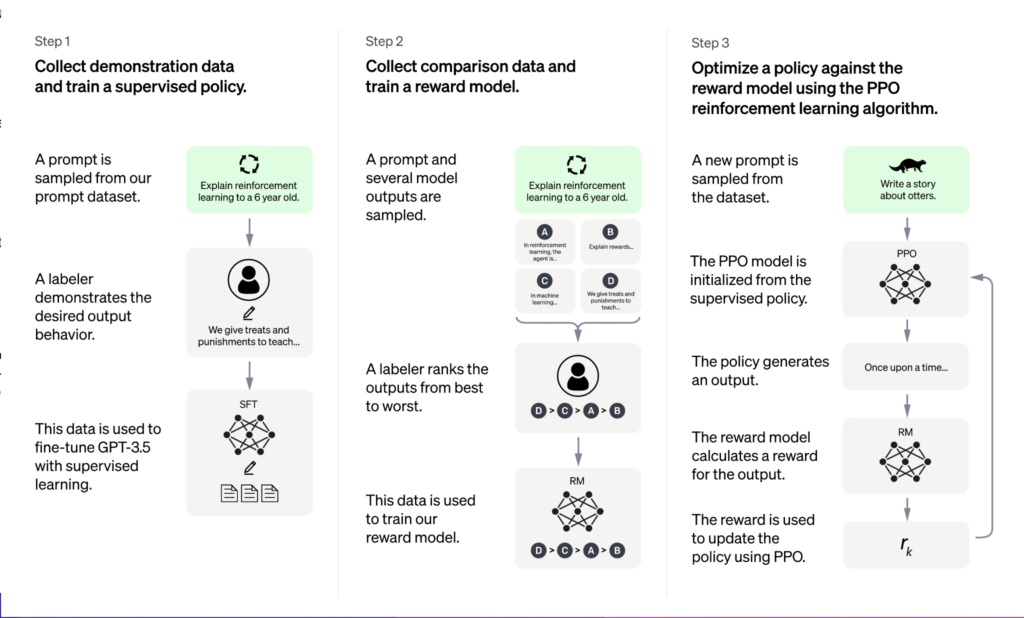Introduction:
Ever since OpenAI introduced ChatGPT, an AI-powered conversational agent, it has rapidly gained popularity across the online community. Recognized as a versatile tool, ChatGPT has become indispensable for enhancing various tasks undertaken by individuals, including students and professionals.
For students considering the integration of Chat GPT into their workflow, it’s imperative to weigh its potential benefits and drawbacks. Rest assured, we’ve got you covered. This comprehensive guide is here to familiarize you with leveraging the ChatGPT feature effectively, catering to both high school and college students.
So, delve into the world of Chat GPT through the following chat gpt login page and uncover its remarkable AI capabilities!
What does ChatGPT mean?

Before delving into its student-oriented applications, let’s grasp the essence of this tool. This foundational knowledge will empower you to harness ChatGPT optimally within your student journey.
ChatGPT, short for Chat Generative Pre-Trained Transformer, stands as an AI-driven conversational AI tool. Operating within a chat-based interface, it astutely responds to user queries. This technological marvel showcases the potential future of AI in our lives. With ChatGPT, you gain access to an extensive wealth of information on diverse subjects, customized according to your requirements.
While its primary function revolves around simulating human-like dialogues, its capabilities transcend mere conversation. The tool boasts a wide array of functions, encompassing composing emails, narratives, well-researched essays, musical compositions, interactive discussions, paraphrasing, coding, decoding, software programming, and beyond.
Remarkably, ChatGPT is available for free, rendering it an indispensable asset for students aiming to streamline and organize their academic endeavors. However, before seamlessly integrating it into your educational and daily routine, it’s imperative to acquaint yourself with its advantages, disadvantages, and potential considerations.
Anticipating Market Trajectory: Embracing the Potential Unleashed by Chat GPT:
As is customary with nascent technologies, pioneers inevitably encounter obstacles, yet the potential harbored by Chat GPT is undeniably remarkable. We can envisage trailblazers swiftly propelling, broadening, and refining this innovation. Venture capital entities are likely already in a race to invest in startups within this realm, resulting in heightened competition and a panorama of thrilling advancements on the horizon.
Prominent contenders like OpenAI and Microsoft are poised to engage in fierce rivalry with other tech behemoths such as Google, Oracle, Salesforce, ServiceNow, and Workday. This dynamic is expected to usher in a surge of proficiency in AI and machine learning among leading vendors. In the event that Microsoft integrates openai chat gpt login APIs into Azure, countless innovators will seize the prospect to fashion domain-specific products and solutions atop that platform. However, it is premature to formulate concrete predictions, and solutions tailored to specific sectors and domains may ultimately come to prominence in the market.
Within this industry, a plethora of “opportunity spaces” abound, spanning from leadership development and fitness coaching to psychiatric counseling, technical training, and customer service, among others. Despite the incipient stage of this market, the potential remains gargantuan. Imagine, for instance, the capacity to meticulously monitor all customer inquiries regarding your products—such potential is truly boundless.
Drawing a parallel to the embryonic era of mobile computing, we can anticipate this technology’s evolution from a perceived “add-on” to corporate systems to a pivotal component of tech ecosystems. Much akin to the evolution of mobile technology, behaviors, markets, and consumer patterns will adapt and metamorphose. Correspondingly, the influence of login chat gpt will catalyze shifts in various occupational roles, encompassing editors, reporters, analysts, customer service agents, and QA engineers. Analysis suggests that around 8% (800,000) of the existing 10.3 million job openings will be directly impacted by Chat GPT. These roles will not vanish but will rather undergo augmentation and refinement through the integration of such systems. Moreover, the emergence of new positions like “Chatbot trainer” is a response to this technological paradigm shift.
There exists a wealth of uncharted terrain to explore and discourse upon within this enthralling sphere. We extend an invitation for you to join us as a member of the Josh Bersin Academy or Corporate Member to partake in further dialogues. Should you possess personal insights or be actively crafting innovative solutions, we eagerly anticipate delving deeper and embracing your contributions.
Let us approach this technology as one of the most luminous stars in our future, all the while exercising prudence and conscientious stewardship in its advancement. Onward and upward, as we wholeheartedly embrace the vast realm of possibilities that Chat GPT holds for our world.
Who was behind the creation of ChatGPT?

ChatGPT made its debut in November 2022 and was crafted by the AI research organization known as OpenAI. Established back in 2015, OpenAI was formed by a group of visionary entrepreneurs and scientists, including Elon Musk and Sam Altman. The startup garnered support from a variety of investors, with Microsoft emerging as a prominent supporter. In addition to birthing ChatGPT, OpenAI also played a pivotal role in the development of Dall-E, an AI-powered text-to-art generator.
How does ChatGPT operate?

ChatGPT functions through its innovative Generative Pre-trained Transformer architecture, employing specialized algorithms to recognize patterns within sequences of data. It harnesses the power of the GPT-3 language model, which stands as a third-generation Generative Pre-trained Transformer rooted in neural network machine learning. By tapping into extensive datasets, this transformer crafts its responses.
ChatGPT utilizes deep learning, a facet of machine learning, to generate text that closely emulates human language via transformer neural networks. These networks predict text, whether it be the subsequent word, sentence, or even paragraph, by learning the typical sequences gleaned from its training data.
The training journey embarks with general data and then advances towards more customized data designed for specific tasks. ChatGPT’s initial training revolved around online text comprehension, allowing it to grasp the nuances of human language. Subsequently, it honed its conversational prowess through interactions documented in transcripts.
Human trainers supply these conversations, assigning rankings to the generated responses. These models of reward play a pivotal role in determining the most optimal answers. Furthermore, users have the opportunity to provide written feedback, thereby contributing to the refinement and enhancement of future dialogues.
How are individuals harnessing the capabilities of ChatGPT?

The utility of ChatGPT goes well beyond simulating human-like conversations. People are applying ChatGPT in a diverse range of practical scenarios, which encompass:
- Writing code for computer programs.
- Crafting musical compositions.
- Drafting emails.
- Condensing articles, podcasts, or presentations.
- Generating content for social media posts.
- Formulating captivating article headlines.
- Solving mathematical problems.
- Identifying keywords for optimizing search engine results.
- Generating content for websites, including articles, blog posts, and quizzes.
- Adapting existing content to different mediums, like transforming a presentation transcript into a blog article.
- Creating product descriptions.
- Engaging in interactive games.
- Assisting in job-related tasks, including resume and cover letter writing.
- Posing trivia questions.
- Simplifying explanations of complex subjects.
Distinctive from other chatbots, ChatGPT boasts an advantage in its ability to recollect a variety of inquiries and maintain a more fluid conversational flow.
How to access openai chat gpt login: Step-by-step guide

Here’s a detailed walk-through to initiate your openai chat gpt login process:
- Navigate to the ‘chat.openai.com’ website.
- Click on the ‘Try ChatGPT’ button.
- Opt for ‘Sign up.’
- Enter your email address in the designated field and click ‘Continue.’
- Instead, you may use the “Continue with [Gmail/Microsoft]” buttons at the bottom to sign in using your current accounts.
- Click “Continue” after creating a password for your account that is at least 8 characters long.
- When asked, log in using your selected username and password.
- Provide your name on the “Tell us about you” screen and press “Continue.”
- Enter your phone number and choose “Yes” or “No” next to “Do you have WhatsApp?”
- Choose “Send code over SMS/WhatsApp.”
- On the nextopenai chat gpt login screen, enter the code that appears on your phone.
- At the top left corner of the screen, click “New discussion.”
- In the text box at the bottom, enter your prompt to submit it.
You’re now all set to begin using openai chat gpt login feature!
Limitations and Precision of ChatGPT:
Although ChatGPT possesses a range of capabilities, it also exhibits certain limitations:
- Constrained comprehension of intricate human language: ChatGPT generates responses by processing input, yet it may not fully capture the intricate nuances of human language, potentially resulting in responses that lack genuine insight and profound understanding.
- Temporal knowledge boundary at 2021: ChatGPT’s training data is up to date only until 2021. Consequently, any inquiries regarding events or information beyond that time frame might elicit inaccuracies. Constructive feedback is invaluable for refining its responses.
- Mechanical and less organic replies: ChatGPT’s word predictions might lead to the recycling of common phrases, causing its responses to sound mechanistic and unnatural. Frequently, manual editing is necessary to ensure a more coherent flow of content resembling human composition.
- Lack of source referencing: While ChatGPT is proficient in summarizing information, it does not supply citations or analytical interpretations for the data and statistics it presents.
- Challenge in interpreting sarcasm and irony: Due to its data-derived nature, ChatGPT may encounter difficulty in comprehending the subtleties of sarcasm or irony within queries.
- Constrained ability to transition focus: ChatGPT might become fixated on a particular aspect of a question and encounter difficulty in seamlessly shifting its response to address multiple inquiries in a single exchange. This could potentially lead to incomplete answers.
Is ChatGPT offered at no cost?
Indeed, ChatGPT can be accessed for free via OpenAI’s website, but users need to complete a registration process by creating a free OpenAI account. Nonetheless, there exists an option to opt for the ChatGPT Plus upgrade, which confers additional advantages. Subscribing to ChatGPT Plus unlocks boundless usage of the service, quicker responses, and guarantees uninterrupted availability. Additionally, subscribers gain prioritized access to novel features, all in exchange for a monthly subscription fee of $20.
For those opting not to subscribe, the complimentary iteration of ChatGPT comes with certain limitations, particularly vulnerability to capacity constraints. During peak utilization, users might encounter access limitations. By choosing to upgrade to ChatGPT Plus, this limitation is eradicated, granting unrestricted access.
What other choices exist in place of ChatGPT?
Because ChatGPT is widely popular, it sometimes encounters issues with availability due to its capacity. To address this, Google introduced “Bard,” which directly pulls information from the internet using Google searches to provide the most current information.
In a distinct approach, Microsoft integrated ChatGPT’s capabilities into Bing, enabling the internet search engine to function in a chat mode. Unlike ChatGPT, Bing’s version benefits from current training and access to information and events beyond 2021.
Apart from these options, there are numerous other alternatives for text generation akin to ChatGPT, such as:
- AI-Writer.
- ChatSonic.
- DeepL Write.
- Open Assistant.
- Perplexity AI.
- Rytr.
- YouChat.
For those interested in coding substitutes, the following selections are available:
- CodeStarter.
- Amazon CodeWhisperer.
- CodeWP.
- OpenAI Codex.
- GitHub Copilot.
- Tabnine
These alternatives furnish users with a variety of choices that cater to their distinct requirements and preferences, surpassing the limitations of ChatGPT’s capacity.
